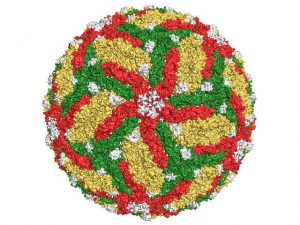
An international team scientists recently determined the three-dimensional (3-D) atomic structure of more than 1,000 proteins that are viewed as potential drug and vaccine targets, helping researchers develop new treatments to combat some of the world’s most dangerous infectious diseases.
Each 3-D structure was subsequently deposited into the Worldwide Protein Data Bank, which is freely available to scientific researchers.
“Almost 50 percent of the structures that we have deposited in the Protein Data Bank are proteins that were requested by scientific investigators from around the world,” said Wayne Anderson, professor of biochemistry and molecular genetics at Northwestern University’s Feinberg School of Medicine.
Anderson said the National Institutes of Health requested the work on proteins for potential drug targets or vaccine candidates for many diseases, such as the Ebola virus disease, Zika virus, and antibiotic resistant bacteria. He added that the project determined several key structures from priority organisms and published their results in medical journals such as Nature and Cell.
Each structure is developed through a process involving cloning, expressing, and crystallizing a protein; collecting x-ray diffraction data at the Advanced Photon Source at Argonne National Laboratory; and then defining the location of each atom to generate a 3-D model that can be analyzed with graphics software.
On top of the 1,000 3-D structures published in this project, an additional 1,000 protein structures are scheduled to be published by the Seattle Structural Genomics Center for Infectious Disease.
Contributing institutions to the project include Northwestern University’s Feinberg School of Medicine, the University of Chicago, the University of Virginia School of Medicine, the University of Calgary, the University of Toronto, the Washington University in St. Louis School of Medicine, UT-Southwestern Medical Center, the Craig Venter Institute, the Sanford Turnham Prebys Medical Discovery Institute, and the University College London.




